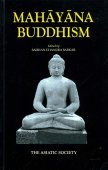Kamalashila, Kamalaśīla: 5 definitions
Introduction:
Kamalashila means something in Buddhism, Pali, Hinduism, Sanskrit. If you want to know the exact meaning, history, etymology or English translation of this term then check out the descriptions on this page. Add your comment or reference to a book if you want to contribute to this summary article.
The Sanskrit term Kamalaśīla can be transliterated into English as Kamalasila or Kamalashila, using the IAST transliteration scheme (?).
In Buddhism
General definition (in Buddhism)
Source: WikiPedia: BuddhismKamalaśīla (fl. 713-763) was an Indian Buddhist of Nalanda Mahavihara who accompanied Śāntarakṣita (725–788) to Tibet at the request of Trhisongdetsen.
Kamalaśīla is renowned for writing three texts, all called Bhāvanākrama, which summarize and build upon aspects of the Yogācāra tradition of Asanga, particularly as pertaining to aspects of meditation practice. The first text has been translated into Classic Chinese.
Source: academia.edu: The Chronological History of BuddhismKamalashila (60-140 CE) was the disciple of Shantarakshita. He quoted Gaudapada. He refers to Vindhyavasin in his Tattvasangraha. Kamalasila has not only mentioned Umveka but also quoted him. He was the senior contemporary of King Dharmapala as indicated by Taranatha.
Languages of India and abroad
Sanskrit dictionary
Source: Cologne Digital Sanskrit Dictionaries: Monier-Williams Sanskrit-English DictionaryKamalaśīla (कमलशील):—[=kamala-śīla] [from kamala > kam] m. Name of a scholar, [Buddhist literature]
[Sanskrit to German]
Sanskrit, also spelled संस्कृतम् (saṃskṛtam), is an ancient language of India commonly seen as the grandmother of the Indo-European language family (even English!). Closely allied with Prakrit and Pali, Sanskrit is more exhaustive in both grammar and terms and has the most extensive collection of literature in the world, greatly surpassing its sister-languages Greek and Latin.
See also (Relevant definitions)
Partial matches: Shila, Kamala, Cila.
Full-text (+37): Kausidya, Tattvasamgraha, Shrutabala, Cintabala, Viryabala, Smritibala, Shruta, Samprajanabala, Sacchidra, Sammosa, Cinta, Auddhatya, Paricayabala, Avavadasammosa, Virya, Balavahana, Nishchidravahana, Sacchidravahana, Anabhogavahana, Paricaya.
Relevant text
Search found 20 books and stories containing Kamalashila, Kamala-shila, Kamala-śīla, Kamala-sila, Kamalaśīla, Kamalasila; (plurals include: Kamalashilas, shilas, śīlas, silas, Kamalaśīlas, Kamalasilas). You can also click to the full overview containing English textual excerpts. Below are direct links for the most relevant articles:
Maha Prajnaparamita Sastra (by Gelongma Karma Migme Chödrön)
Part 13 - Non-existence of the donor < [Chapter XX - The Virtue of Generosity and Generosity of the Dharma]
Part 5 - Pañcamātra Bhikṣusahasra (section of five thousand arhats) < [Chapter VI - The Great Bhikṣu Saṃgha]
Bhūmi 7: the far-gone ground (dūraṃgamā / dūraṅgamā) < [Chapter XX - (2nd series): Setting out on the Mahāyāna]
Jainism and Patanjali Yoga (Comparative Study) (by Deepak bagadia)
Part 8.9 - Carvaka Philosophy < [Chapter 1 - Introduction]
Reverberations of Dharmakirti’s Philosophy (by Birgit Kellner)
In Light of the Apoha Theory of Śāntarakṣita and Kamalaśīla
Śāntarakṣita on Two Kinds of Arguments for Self-Awareness
The Tattvasangraha [with commentary] (by Ganganatha Jha)
Verse 3646 < [Chapter 26 - Examination of the ‘Person of Super-normal Vision’]
A comparative study between Buddhism and Nyaya (by Roberta Pamio)
6. Nature of Illusion < [Chapter 1 - The Nature and Criterion of Knowledge]
4. Criticism of the Theories of Truth < [Chapter 1 - The Nature and Criterion of Knowledge]
6.2. The Meaning of Kalpanā < [Chapter 3 - The Buddhist Theory of Perception]
A History of Indian Philosophy Volume 2 (by Surendranath Dasgupta)
Part 20 - Dialectical criticisms of Śāntarakṣita and Kamalaśīla (a.d. 760) < [Chapter XI - The Śaṅkara School of Vedānta (continued)]
Part 2 - Thought and its Object in Buddhism and in Vedānta < [Chapter XI - The Śaṅkara School of Vedānta (continued)]
Part 13 - Logical Speculations and Terms relating to Academic Dispute < [Chapter XIII - Speculations in the Medical Schools]
Related products
